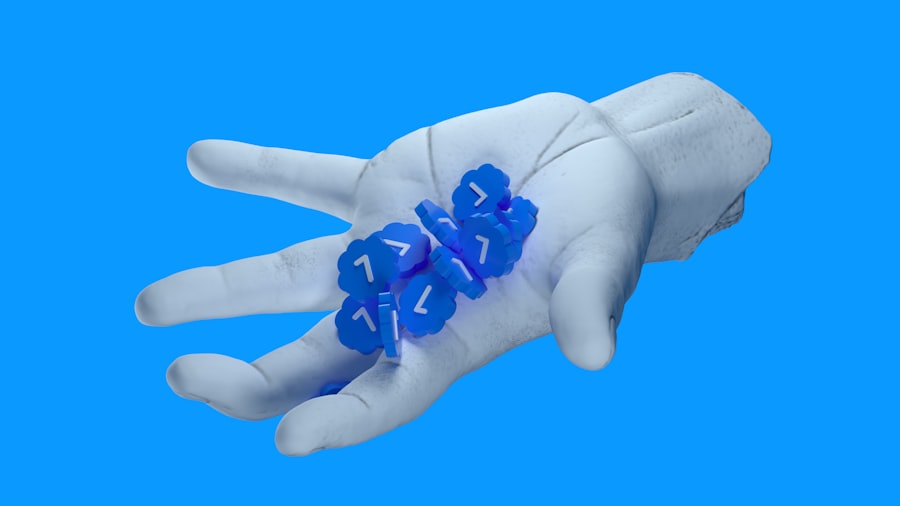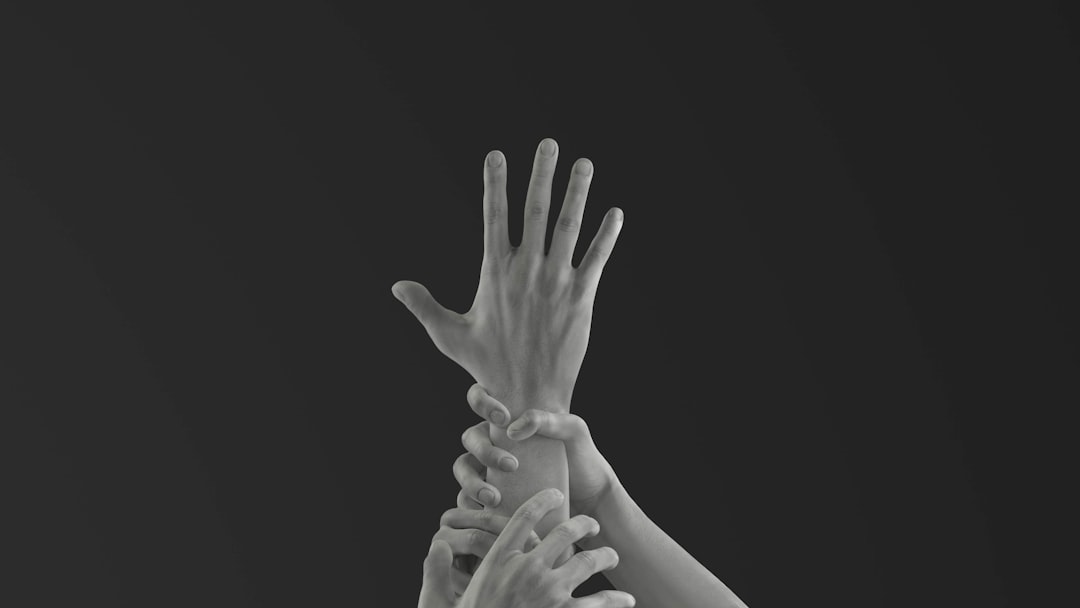The Dead Hand System, often referred to in legal and estate planning contexts, is a mechanism that allows a deceased individual to exert control over their assets and the behavior of their heirs even after their death. This system is typically implemented through trusts or wills, where specific conditions or stipulations are laid out to dictate how an estate should be managed or distributed. The term “dead hand” evokes the idea of a lingering influence, where the wishes of the deceased continue to shape the lives of the living, often in ways that can be both beneficial and restrictive.
In essence, the Dead Hand System serves as a means for individuals to impose their values, beliefs, or desires on future generations. This can manifest in various forms, such as requiring heirs to meet certain conditions before receiving their inheritance or mandating that assets be used for specific purposes. While this system can ensure that the deceased’s intentions are honored, it also raises questions about autonomy and the extent to which one person should control the lives of others posthumously.
Key Takeaways
- The Dead Hand System is a legal concept that allows a person to control assets and decision-making beyond their death.
- The origins of the Dead Hand System can be traced back to ancient Roman law and have evolved over time to include modern estate planning techniques.
- The Dead Hand System works by using legal instruments such as trusts, wills, and other mechanisms to ensure that the wishes of the deceased are carried out after their death.
- Examples of the Dead Hand System in practice include the establishment of perpetual trusts and the imposition of conditions on inheritances.
- Criticisms and controversies surrounding the Dead Hand System focus on issues of control, fairness, and the potential for unintended consequences.
Origins and History of the Dead Hand System
The concept of the Dead Hand System has roots that can be traced back to ancient legal traditions. In many cultures, the idea of controlling one’s legacy after death was not only common but also revered. Historical records indicate that various civilizations, including the Romans and Greeks, employed mechanisms similar to the Dead Hand System to ensure that their values and wishes were preserved through generations.
These early forms of testamentary control laid the groundwork for modern estate planning practices. As societies evolved, so did the legal frameworks surrounding inheritance and estate management. The Dead Hand System became more formalized with the development of common law in England during the Middle Ages.
Legal scholars began to explore the implications of a deceased person’s wishes on their heirs, leading to the establishment of doctrines that allowed for conditional bequests and trusts. Over time, these legal principles were adopted and adapted across different jurisdictions, resulting in a diverse array of practices surrounding the Dead Hand System in contemporary estate planning.
How Does the Dead Hand System Work?

The mechanics of the Dead Hand System can vary significantly depending on jurisdiction and individual circumstances. Generally, it operates through legal instruments such as wills and trusts, which outline specific conditions under which assets are to be distributed. For instance, a testator may stipulate that an heir must reach a certain age or achieve specific educational milestones before receiving their inheritance.
This conditionality is a hallmark of the Dead Hand System, reflecting the deceased’s desire to influence their heirs’ lives. In addition to age or educational requirements, the Dead Hand System can impose restrictions on how inherited assets are used. For example, a trust may mandate that funds be allocated solely for educational purposes or charitable endeavors.
Such stipulations can serve to promote values that the deceased held dear, ensuring that their legacy aligns with their principles. However, these conditions can also lead to disputes among heirs, particularly if they perceive the restrictions as overly burdensome or unfair.
Examples of the Dead Hand System in Practice
| Country/Company | Dead Hand System | Impact |
|---|---|---|
| Russia | Perimeter system | Ensures retaliation in case of nuclear attack |
| United States | Fail-deadly systems | Designed to launch nuclear weapons even if the command structure is incapacitated |
| South Korea | Automated sentry guns | Used in the Korean Demilitarized Zone to automatically fire at intruders |
Numerous high-profile cases illustrate the application of the Dead Hand System in real-world scenarios. One notable example involves the estate of a wealthy philanthropist who established a trust with stringent conditions for his heirs. The trust required beneficiaries to engage in community service and demonstrate a commitment to charitable work before receiving any financial support.
This approach not only reflected the philanthropist’s values but also aimed to instill a sense of responsibility in future generations. Another example can be found in family businesses where founders impose conditions on inheritance to ensure that successors are adequately prepared for leadership roles. A business magnate might create a trust that requires heirs to gain relevant experience in the industry before they can inherit shares of the company.
Such measures are designed to safeguard the business’s future while reinforcing the founder’s vision and standards for success.
Criticisms and Controversies Surrounding the Dead Hand System
Despite its potential benefits, the Dead Hand System is not without its critics. One major concern revolves around the ethical implications of controlling heirs’ lives after death. Detractors argue that such restrictions can undermine personal autonomy and hinder individuals from making their own choices.
The notion that a deceased person can dictate terms long after they have passed raises questions about fairness and individual rights. Additionally, disputes often arise among family members regarding the interpretation and enforcement of these stipulations. Heirs may feel resentful or burdened by conditions they perceive as unreasonable or outdated.
Legal battles over estates can become contentious, leading to fractured family relationships and prolonged litigation. Critics contend that these conflicts highlight the potential pitfalls of imposing rigid controls through the Dead Hand System.
Legal and Ethical Implications of the Dead Hand System

The legal landscape surrounding the Dead Hand System is complex and varies by jurisdiction. Courts often grapple with balancing respect for a deceased person’s wishes against the rights of living heirs. In some cases, judges may intervene if they determine that certain conditions are excessively restrictive or contrary to public policy.
This legal scrutiny underscores the importance of crafting clear and reasonable stipulations within estate planning documents. From an ethical standpoint, the Dead Hand System raises significant questions about legacy and responsibility. While it is natural for individuals to want to influence their descendants positively, there is a fine line between guidance and control.
Ethical considerations come into play when evaluating whether it is appropriate for one person to impose their values on another’s life choices indefinitely. As society evolves, so too do perceptions of what constitutes fair and just inheritance practices.
The Role of the Dead Hand System in Estate Planning
In estate planning, the Dead Hand System plays a crucial role in shaping how individuals approach their legacies. Many people view it as an opportunity to ensure that their values endure beyond their lifetime. By incorporating specific conditions into wills or trusts, individuals can create a framework that reflects their priorities and aspirations for future generations.
However, effective estate planning requires careful consideration of how these stipulations will impact heirs.
Engaging in open discussions with family members about expectations and values can help mitigate potential conflicts arising from the Dead Hand System.
The Impact of the Dead Hand System on Inheritance and Succession
The influence of the Dead Hand System extends beyond individual families; it shapes broader societal attitudes toward inheritance and succession. By imposing conditions on wealth transfer, this system can perpetuate certain values or behaviors within families over generations. For instance, families with a history of philanthropy may continue to prioritize charitable giving due to stipulations set forth by previous generations.
Conversely, restrictive conditions can also lead to resentment among heirs who feel constrained by their predecessors’ expectations. This dynamic can create tension within families and impact relationships long after an individual’s passing. As such, understanding how the Dead Hand System affects inheritance dynamics is essential for both estate planners and beneficiaries alike.
Alternatives to the Dead Hand System
While the Dead Hand System offers a means for individuals to exert control over their legacies, there are alternative approaches to estate planning that prioritize flexibility and autonomy for heirs. One such alternative is creating an outright gift without conditions attached, allowing beneficiaries full discretion over how they manage their inheritance. This approach fosters independence and encourages heirs to make decisions based on their unique circumstances.
Another option is establishing a family foundation or donor-advised fund that allows heirs to engage in philanthropy without stringent requirements imposed by a deceased relative. Such structures provide opportunities for family members to collaborate on charitable initiatives while maintaining flexibility in how they choose to contribute.
The Future of the Dead Hand System
As societal norms evolve, so too does the perception of the Dead Hand System within estate planning practices. Increasingly, individuals are recognizing the importance of balancing legacy with personal autonomy for heirs. This shift may lead to more flexible approaches that prioritize open communication among family members regarding expectations and values.
Moreover, advancements in technology are likely to influence how individuals approach estate planning in general. Digital assets and online platforms may necessitate new considerations regarding inheritance and control over one’s legacy. As these changes unfold, it will be essential for estate planners and individuals alike to adapt their strategies while remaining mindful of both legal implications and ethical considerations surrounding the Dead Hand System.
Understanding and Navigating the Dead Hand System
In conclusion, the Dead Hand System represents a complex interplay between legacy, control, and individual autonomy within estate planning. While it offers individuals a means to influence future generations according to their values, it also raises significant ethical and legal questions about fairness and personal freedom. As society continues to evolve, so too will perceptions surrounding this system.
Navigating the intricacies of the Dead Hand System requires careful consideration from both planners and beneficiaries alike. Open dialogue about expectations and values can help mitigate potential conflicts while ensuring that legacies are honored in ways that resonate with future generations. Ultimately, understanding this system is crucial for anyone involved in estate planning or inheritance discussions, as it shapes not only individual legacies but also broader societal attitudes toward wealth transfer and familial responsibility.
The Dead Hand system, a Cold War-era nuclear control mechanism, is a fascinating topic that delves into the complexities of military strategy and automated defense systems. For those interested in exploring similar themes, an article on the website “Hey Did You Know This” provides intriguing insights into historical military technologies and their implications. You can read more about these captivating subjects by visiting this
